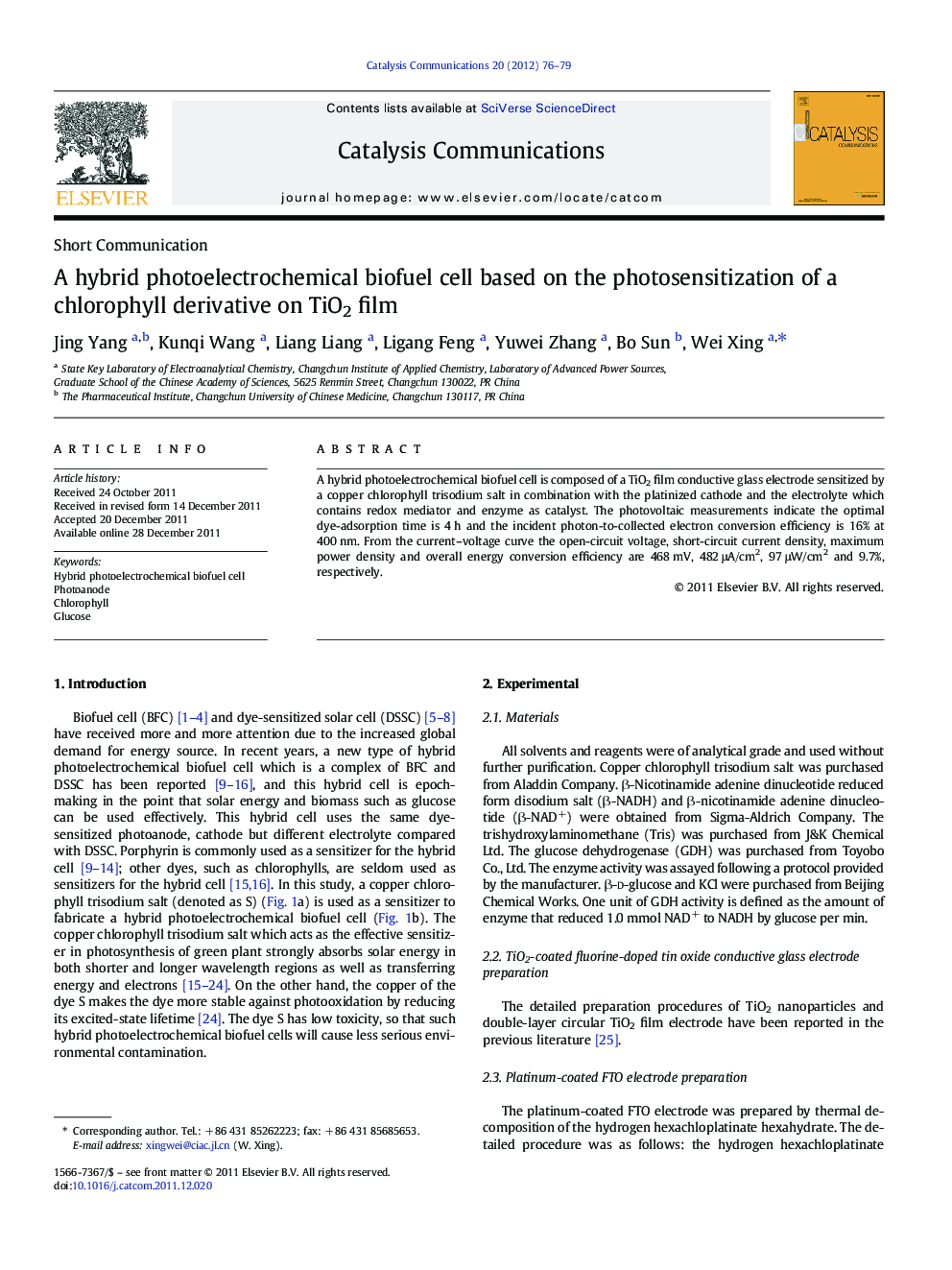| Article ID | Journal | Published Year | Pages | File Type |
|---|---|---|---|---|
| 50784 | Catalysis Communications | 2012 | 4 Pages |
A hybrid photoelectrochemical biofuel cell is composed of a TiO2 film conductive glass electrode sensitized by a copper chlorophyll trisodium salt in combination with the platinized cathode and the electrolyte which contains redox mediator and enzyme as catalyst. The photovoltaic measurements indicate the optimal dye-adsorption time is 4 h and the incident photon-to-collected electron conversion efficiency is 16% at 400 nm. From the current–voltage curve the open-circuit voltage, short-circuit current density, maximum power density and overall energy conversion efficiency are 468 mV, 482 μA/cm2, 97 μW/cm2 and 9.7%, respectively.
► A new type of hybrid photoelectrochemical biofuel cell is prepared. ► There are adsorption peaks in visible region for the sensitizer. ► The IPCE of the cell reaches as high as 16% at 400 nm.
